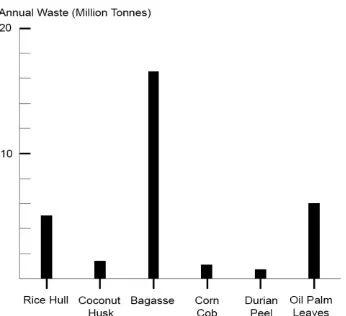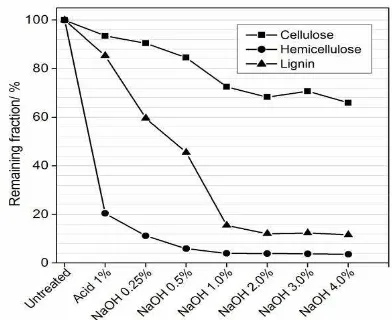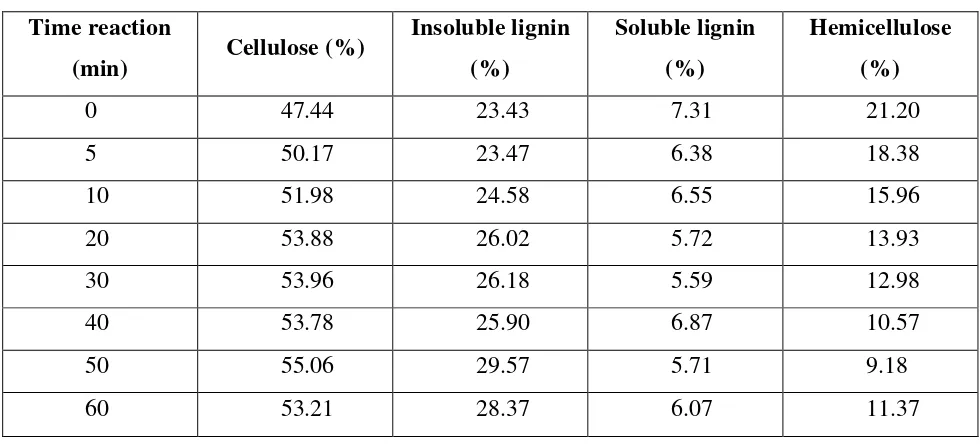THERMAL INSULATION PERTICLE BOARD MADE FROM SUGARCANE BAGASSE AND KENAF FIBERS REINFORCED WITH POLYETHYLENE
STEPHANIE MUJAN HAMILTON
i SUPERVISOR VERIFICATION
“I hereby declare that I have read this thesis and in my opinion this report is sufficient in terms of scope and quality for the award of the degree of Bachelor of
Mechanical Engineering (Thermal- Fluids).”
Signature :….………..
Name of Supervisor :………..
ii DECLARATION
“I hereby declare this report is resulted from my own research except as cited in references”
Signature :……….
Author’s Name :………
iii DEDICATION
iv ACKNOWLEDGEMENT
First of all, I would like to thank our God Almighty for the blessings and love that He gave to me throughout my time on completing this project and also to the people who have helped me. Amen.
I would like to thank and give millions of appreciation to my supervisor, Mr. Md Isa bin Ali for the continuous support and guidance, relentless assists me with lots of advice and encouragement along the way of completing this progress report. I would like to thank Mr. Shamsul bin Bahari for his guidance along this project. He had helped me a lot during finishing this project by giving many ideas and solutions everytime I faced problems. Furthermore, I would also like to thank Dr Mohd. Zulkefli bin Selamat for helping me and assisting me in process of completing this report. Besides that, I also want to thank all those technicians that help me along this project.
Also, I would like to thank my fellow classmates in which without them, my work won’t go as smoothly as needs be. It is my appreciation to all of you for sharing your opinions in this project. I would also like to thank all of the technicians for helping and providing extra knowledge during the completion of the report.
Last but not least, I would like to thank my family members, for their moral supports toward me throughout this project.
v ABSTRACT
vi ABSTRAK
vii TABLE OF CONTENTS
CHAPTER TOPIC PAGE
VERIFICATION i
DECLARATION ii DEDICATION iii ACKNOWLEDGEMENT iv ABSTRACT v
ABSTRAK vi TABLE ON CONTENTS vii LIST OF TABLE x LIST OF FIGURE xi LIST OF SYMBOL AND ABBREVIATIONS xiii
LIST OF APPENDIX xiv
CHAPTER 1 INTRODUCTION 1
1.1 BACKGROUND OF PROJECT 1 1.2 OBJECTIVES 2 1.3 SCOPES 2 1.4 PROBLEM STATEMENT 3
CHAPTER 2 LITERATURE REVIEW 4
2.1 NATURAL FIBERS 4
2.1.1 Sugarcane Fibers 7 2.1.2 Kenaf Fibers 10
2.1.3 Bamboo Fibers 12
2.1.4 Pineapple Fibers 13
2.1.5 Coconut Coir 14
viii 2.2.1 Composites 17
2.2.2 Particle Board 18
2.2.3 Applications of Thermal Insulation 19 2.3 COMPOSITES REINFORCEMENT METHOD 20 2.3.1 Polyethylene 22
2.3.2 Polyurethane 23
2.3.3 Polyvinyl Chloride (PVC) 24
2.3.4 Polypropylene 25
2.4 MECHANICAL TEST 25
2.4.1 Tensile Test 26
2.4.2 Hardness Test 29
2.4.3 Bending Test 30
2.4.4 Thermal Conductivity 31
CHAPTER 3 METHODOLOGY 32
3.1 COMPOSITION OF MATERIALS 32 3.2 PREPARATION OF MATERIALS 33 3.2.1 Preparation of Sugarcane Baggase Powder 33 3.2.2 Preparation of Kenaf Fibers 34 3.2.3 Preparation of Mixed Materials 35 3.3 FORMATION OF PARTICLE BOARD 36 3.4 TEST METHOD AND EQUIPMENT USED 38
3.4.1 Tensile Test 38
3.4.2 Flexural Test 38
3.4.3 Thermal Conductivity 39
3.4.4 Hardness Test 40
3.4.5 Impact Test 40
CHAPTER 4 RESULTS 41
4.1 TENSILE TEST 41
4.2 FLEXURAL TEST 42
4.3 THERMAL CONDUCTIVITY TEST 43
4.4 HARDNESS TEST 44
ix
CHAPTER 5 DISCUSSION 45
5.1 TENSILE TEST 46
5.2 FLEXURAL TEST 48
5.3 THERMAL CONDUCTIVITY TEST 49
5.4 HARDNESS TEST 51
5.5 IMPACT TEST 52
5.6 EVALUATION OF PARTICLE BOARDS 52
CHAPTER 6 CONCLUSION AND RECOMMENDATION 55
6.1 CONCLUSION 55
6.2 RECOMMENDATION 56
REFERENCES 57
APPENDIX A 63
APPENDIX B 66
x LIST OF TABLE
NO TITLE PAGE
2.1 Average bagasse compositions 6
2.2 Bagasse chemical composition 9
2.3 The chemical composition of coir 15
2.4 The advantages and disadvantages of resin matrix 22
2.5 The value of PVC properties 25
3.1 Composition of Materials 32
3.2 Weight needed for every material of different composition
for every mixing process 36 3.3 Pictures of Particle Boards Formed of Different Composition 37 4.1 Value of Tensile Stress (MPa) of Different Composition 42 4.2 Value of Flexural Stress (MPa) of Different Composition 43 4.3 Value of Thermal Conductivity (W.m/K) of Different
Composition 43
4.4 Value of Hardness (D) of Different Composition 44 4.5 Value of Impact (J) of Different Composition 44 5.1 Average Value of Every Test of Different Composition 46 5.2 List of Thermal Conductivity Obtained for Different Board 50 from Previous Studies
xi LIST OF FIGURES
NO TITLE PAGE
2.1 Annual production of agricultural waste 6
2.2 Cross section of different fiber 7
2.3 Remaining fractions of lignocellulosic components in bagasse
samples after pretreatment steps 8
2.4 Structure of kenaf plant 10
2.5 The vertical variation of fiber length for bast and core in kenaf 11 2.6 The hierarchical bamboo fiber different organization 13 2.7 Production process of insulating board made from coconut husk 15 2.8 Comparison of thermal conductivities and densities of insulation
board made from agricultural waste materials 17 2.9 The process for composite part manufacturing; sugarcane fibers
reinforced with polypropylene 18
2.10 Particle board 19
2.11 The mechanism of the application of thermal insulation in high
capacitance multilayer 19
2.12 Laser for combining thermosetting and thermoplastic 21
2.13 Polyethylene 22
2.14 Chemical structure of polyurethane 23
2.15 Method for testing shape retention and shape recovery rate 26
2.16 Tensile specimen 26
2.17 The schematic representation of the micromechanical techniques 27 2.18 Stress vs % strain of various natural fibers 28 2.19 Typical pull-out test load–displacement curves 28 2.20 Effect of the surface treatment on the tensile strength for different
xii 2.21 Variation of hardness as the function of density 29
2.22 Loading curve for bending 30
2.23 Loading curve for compression 30
2.24 Variation of thermal conductivity as a function of density 31
3.1 Preparation of Sugarcane Bagasse 33
3.2 Kenaf fiber 34
3.3 Crusher 34
3.4 Crushed Kenaf Fiber 34
3.5 Preparation of Mixed Material 35
3.6 Mold 37
3.7 Hot Pressed Machine 37
3.8 Instron Machine 38
3.9 Tensile Test 38
3.10 Specimen 38
3.11 Flexural Test Jig 39
3.12 KD2 Pro 39
3.13 Drilling Process 39
3.14 Durometer 40
3.15 Hardness Test 40
3.16 Pendulum Swing Impact Test Machine 40
4.1 Tensile Stress versus Tensile Strain of 100% 41 Polyethylene Particle Board
4.2 Flexural Stress versus Flexural Extension 42 for 100% Polyethylene
xiii LIST OF SYMBOL AND ABBREVIATIONS
k = Thermal Conductivity, (W/mK)
D = Hardness Reading, D
PE = Polyethylene
K = Kenaf fibers
S = Sugarcane bagasse
xiv LIST OF APPENDIX
NO TITLE PAGE
A Gantt chart for PSM 1 64
Gantt chart for PSM 2 65
B Graphs of Tensile Test 66
1 CHAPTER 1
INTRODUCTION
1.1 BACKGROUND OF THE PROJECT
Thermal insulation is a process of reducing heat transfer between different objects or two different regions. Thermal insulation also can be known as heat flow resistor. (Dictionary of Construction, 2012). Wall insulation and roof insulation are two of the applications of thermal insulation that are always being used in the society nowadays. These two types of insulations are used to reduce the amount of heat from transferring into the inside part of a building or a house. Wall insulation and roof insulation are in the form of particle board which act as the wall and roof for certain building or houses.
How effective an insulation process is depends on the type of materials used and the process of the particle board production. These will cause the different in properties for different process or different materials used for every thermal insulation particle board. Three of the raw materials that are always being used for insulation purpose are synthetic polymer or synthetic fiber which is petroleum based, natural fibers and wool. The examples of synthetic polymers are polyurethane and polystyrene. While for natural fibers, it can be found in sugarcane, bamboo, flax, cotton or jute. Wool can be found in fiberglass, rock wool and sheep wool.
2 (Almazan et al., 1998). Kenaf is a type of bio-composite plant. Its scientific name is Hibiscus Cannabinus L. (Merriam-Webster, 2002). Kenaf is a type of plant that produces strong fibers.
1.2 OBJECTIVES
1. To design a particle board made from sugarcane bagasse and kenaf fibers reinforced with polyethylene with different composition.
2. To study the mechanical properties of the particle board made from sugarcane baggase and kenaf fibers reinforced with polyethylene.
1.3 SCOPES
This study is about process investigation of inventing a thermal insulation particle board. The process for this study can refer to gantt charts provided in Appendix A. This can be achieved through the selection of the materials used in the making of the particle board. The scope of this study is to produce an effective thermal insulation particle board which is made from sugarcane bagasse and kenaf fibers.
From this experiment, the different compositions of the materials were chosen to be formed into particle boards. Calculations were made for every composition to weight 220 gram. For a particle board preparation, approximately 220 gram of mixed polyethylene, sugarcane and kenaf fibers are needed.
3 1.3 PROBLEM STATEMENT
The temperature of a house can increase easily or rapidly nowadays especially during the hot weather. This is due to solar radiation. Most of the people choose to use air conditioner to cool down their house. However, not everyone can afford air conditioner. Besides, it is much harder for everyone to afford an eco-friendly air conditioner due to its higher price compare with the other ordinary air conditioner. This study was made to overcome this problem. The insulators can help in preventing heat from entering the house and also help to maintain the temperature of the house. Some of the method that had been done for the matter of this problem is aluminium foil as the radiant barrier.
4 CHAPTER 2
LITERATURE REVIEW
2.1 NATURAL FIBERS
Natural fiber is a type of fibers that came from natural sources such as, plant, animals and mineral sources. Fiber is a type of hair like materials in a continuous form of filament which is a discrete elongate piece. Fibers are available from many of these materials, and they are also called plant fibers, natural fibers or vegetable fibers (Satyanarayana et al., 2007). Fibers can be found in many different type of source such as, pineapple, kenaf, sugarcane, bamboo, animal hair, feathers, sheep fur, goat and other.
Most of the fibers have to go through extraction method before involve in the manufacturing process. Extraction of fibers is a method of separating the fibers from the other non-fibers part of the sources. Different type of fibers will have their own extraction method which is depend on their chemical composition or properties. Some of the fibers just have to be dried to get the fibers while some plant has to go through chemical reaction to be extracted.
5 future reinforcing materials. It is easily to be found in most of the origins among developing countries (Aziz et al., 1981). Many technologies have been applied toward fibers in order to produce a good quality of fiber reinforced materials. Fibers are widely used in the society for the application of insulators, human comfort used, building construction and manufacturing materials. Fibers are widely used due to its advantages. Fibers are very easy to be found. Besides that, it is also low density but has quite high specific strength. Fibers are also believes non-relatively non-abrasive, easy for the surface modification. Plus, it is very widely available (Ribot et al., 2011). For many years, one of the application fibers had involved with is for the reinforcement purpose and act as fillers in manufacturing industries such as thermoplastic and thermosetting composites.
However, natural fibers have their own weaknesses such as lack of good interfacial adhesion, low melting point, and poor resistance towards moisture. These weaknesses cause use of natural fiber reinforced composites becoming less attention. By doing treatment on the natural fibers is believed can help to clean and chemically modify the surface, stop the moisture absorption process, and also increase the surface roughness (Kalia et al., 2009).
Based on Prakash (2009), there are two groups of natural fibers fillers; wood and non-wood natural fibers. The examples for non-wood natural fibers are straw fibers, bast, leaf, seeds, fruits and grass fibers. While for the wood fibers are soft or hard woods.
6 Figure 2.1: Annual production of agricultural waste
(Source: Satta et al., 2008).
Table 2.1 shows the average bagasse compositions obtained from the study of Verma et al. (2012). From the table, the composition for moisture is almost half of the whole item, 49%. The other 48.7% is occupied by fibers. Soluble solids have the lowest percentage inside the baggase composition. From this study, most of the baggase composition stands from moisture. One of the ways to get rid of moisture is by exposing them with heat. Soluble solids might be outside materials that get attached accidentally together with the baggase. From this study, it is proven that baggase is one of the most convenient waste materials ever. The composition is very simple and separation between different types of compositions can be made easily.
Table 2.1: Average bagasse compositions (Source: Verma et al., 2012).
Items Percentage (%)
1. Moisture 49.0
2. Soluble solids 2.3
7 Figure 2.2 shows the cross section of different fiber plant that had been found from Murali et al. (2007). According to this study, vakka plant has the largest diameter among tested plants. The smallest diameter goes to sisal plant. The size of the plant diameter determines the amount of fibers can be obtained from each plant.
Figure 2.2: Cross section of different fiber (Source: Murali et al., 2007).
2.1.1 Sugarcane Fibers
Sugarcane is widely used around the world for the production of ethanol and sugar. Sugarcane composed of fiber, pith, non-soluble solids and water (Almazan et al., 1998). Sugarcane bagasse is a residue produced in large quantities by sugar industries. Generally, 1 ton of sugarcane bagasse generates 280 kg of bagasse which also known as the fibrous by-product remaining after sugar extraction from sugarcane (Sun et al., 2004). Sugar cane is one of the photosynthetic materials that work efficiently among the commercial crops. It can fix almost 2 - 3 percent of radiant solar energy and transform it into green biomass. Sugarcane high photosynthetic capability also allows it to show a high coefficient of carbon dioxide fixation, comparable to the moderate climate zone woods. This contributes to the decrease of the greenhouse effect (Cardona et al., 2010).
8 million tons of sugarcane bagasse (CONAB, 2011). Thus, this made sugarcane one of the most one of the most abundant low-cost lignocelullosic material (Cardona et al., 2010). Lignocellulose is a combination of lignin and cellulose that strengthens cells within sugarcane which is categorized as woody plant.
Sugarcane consists of three main parts, lignin, hemicelullose and cellulose. Preliminary processing is needed to separate these three parts. These processes will cause the breakage of cell wall structure by removing, simplifying or disintegrating the lignin. The type of process used depends on the material used and the proposed purpose of lignocellulosic fractions utilization. It is depend on how it is mechanically, physically, biologically or chemically affected. The development of pre-treatment processes has to be strong enough to separate the cell wall arrangement. The process also has to be medium enough to avoid change in it properties.
Acid and alkali treatment can be done to obtain the chemical composition of the sugarcane. Figure 2.3 shows the chemical composition of untreated bagasse samples and of samples submitted to acid 1% of sulphuric acid (H2SO4), and alkaline
pre-treatments (NaOH 0.25% to 4%).
Figure 2.3: Remaining fractions of lignocellulosic components in bagasse samples after pre-treatment steps.
9 Tables 2.2 shows the results of bagasse chemical composition obtained in different time reaction of bagasse treatment with sulphuric acid. (Candido et al., 2012).
Table 2.2: Bagasse chemical composition (Source: Candido et al., 2012)
Time reaction
(min) Cellulose (%)
Insoluble lignin (%) Soluble lignin (%) Hemicellulose (%)
0 47.44 23.43 7.31 21.20
5 50.17 23.47 6.38 18.38
10 51.98 24.58 6.55 15.96
20 53.88 26.02 5.72 13.93
30 53.96 26.18 5.59 12.98
40 53.78 25.90 6.87 10.57
50 55.06 29.57 5.71 9.18
60 53.21 28.37 6.07 11.37
Satyanarayana et al. (2007) states that international trends in the study of reveal that:
(i) Fibers have the potential to be used in automotive applications. (ii) Fibers are one of the ideal competitors for the non-renewable.
(iii) Expensive petroleum-based synthetic fibers in composite materials which are particularly are used in the automotive industry and
including building sectors.
(iv) The awareness of ecological concerns and particularly European countries are passing laws which will require, by 2015, the use of up to 95% recyclable materials in vehicles.
(v) It is possible to produce quality fibers, suitable for different



